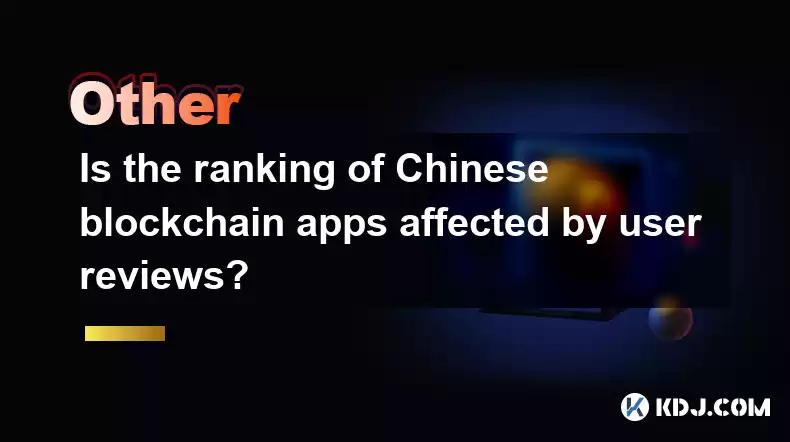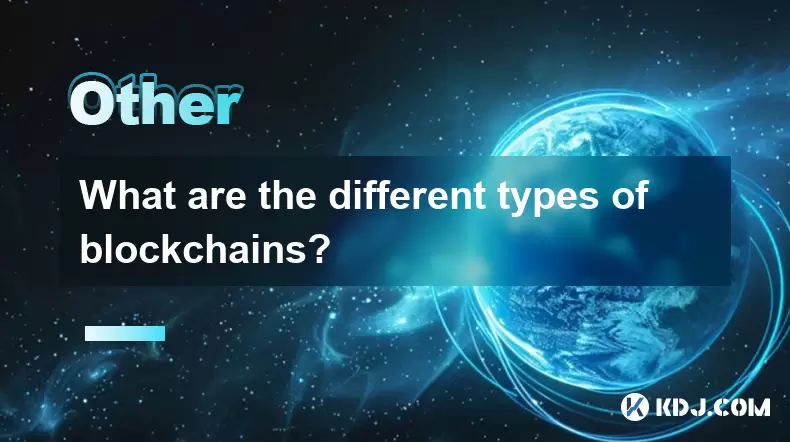-
 Bitcoin
Bitcoin $112400
-1.07% -
 Ethereum
Ethereum $3409
-3.27% -
 XRP
XRP $2.784
-6.60% -
 Tether USDt
Tether USDt $0.9997
-0.03% -
 BNB
BNB $739.3
-2.09% -
 Solana
Solana $158.0
-2.90% -
 USDC
USDC $0.9998
-0.02% -
 TRON
TRON $0.3213
-0.94% -
 Dogecoin
Dogecoin $0.1929
-5.01% -
 Cardano
Cardano $0.6974
-2.82% -
 Hyperliquid
Hyperliquid $36.69
-2.31% -
 Sui
Sui $3.327
-4.80% -
 Stellar
Stellar $0.3672
-5.18% -
 Chainlink
Chainlink $15.65
-3.07% -
 Bitcoin Cash
Bitcoin Cash $525.0
-1.68% -
 Hedera
Hedera $0.2291
-6.00% -
 Avalanche
Avalanche $20.91
-2.96% -
 Ethena USDe
Ethena USDe $1.000
0.00% -
 Toncoin
Toncoin $3.520
-1.12% -
 UNUS SED LEO
UNUS SED LEO $8.968
0.14% -
 Litecoin
Litecoin $105.7
0.26% -
 Shiba Inu
Shiba Inu $0.00001181
-1.79% -
 Polkadot
Polkadot $3.492
-2.08% -
 Uniswap
Uniswap $8.800
-3.10% -
 Dai
Dai $0.9999
-0.01% -
 Monero
Monero $289.9
-3.17% -
 Bitget Token
Bitget Token $4.243
-1.27% -
 Pepe
Pepe $0.00001006
-3.67% -
 Cronos
Cronos $0.1248
-5.68% -
 Aave
Aave $249.7
-2.50%
Is the ranking of Chinese blockchain apps affected by user reviews?
User reviews significantly impact the ranking of Chinese blockchain apps, with high ratings and positive feedback boosting visibility on app stores.
Apr 16, 2025 at 11:00 am

The ranking of Chinese blockchain apps within the cryptocurrency circle is a topic of significant interest, particularly how user reviews might influence these rankings. To understand this, we need to delve into the mechanics of app rankings on various platforms and the role that user reviews play in this ecosystem.
The Role of User Reviews in App Rankings
User reviews play a crucial role in the overall perception and ranking of apps, including blockchain apps in China. On app stores like Apple's App Store and Google Play, user ratings and reviews are a key factor that influences an app's visibility and ranking. These platforms use complex algorithms that consider multiple factors, including user reviews, to determine the order in which apps are displayed to users.
When it comes to blockchain apps, user reviews can significantly impact their ranking. A high average rating, coupled with a large number of reviews, can signal to the app store algorithms that the app is popular and well-received by users. This can lead to a higher ranking, making the app more visible to potential new users.
How App Stores Use User Reviews
App stores like the Apple App Store and Google Play use user reviews in several ways to determine app rankings. Here's how they do it:
- Average Rating: The average rating of an app is a direct indicator of user satisfaction. Apps with higher average ratings tend to rank better.
- Number of Reviews: The total number of reviews an app receives also plays a role. More reviews can indicate higher user engagement and popularity.
- Recency of Reviews: Recent reviews are often given more weight than older ones, as they reflect the current state of the app.
- Review Sentiment: The sentiment of the reviews, whether positive or negative, can influence the app's ranking. Positive sentiment can boost rankings, while negative sentiment can lower them.
The Impact of User Reviews on Chinese Blockchain Apps
In the context of Chinese blockchain apps, user reviews can have a profound impact on their rankings. Given the competitive nature of the blockchain and cryptocurrency market in China, a favorable user review can be the difference between an app being discovered by new users or remaining obscure.
For instance, a blockchain app that offers a user-friendly interface for trading cryptocurrencies might receive high ratings and positive reviews for its ease of use and reliability. These positive reviews can propel the app higher in the rankings, making it more visible to potential users searching for similar apps.
Strategies to Improve User Reviews and Rankings
To improve their rankings, developers of Chinese blockchain apps can employ several strategies focused on enhancing user reviews:
- Enhance User Experience: Ensuring that the app is user-friendly, reliable, and offers valuable features can lead to higher user satisfaction and better reviews.
- Engage with Users: Responding to user reviews, both positive and negative, shows that the developers care about user feedback and are committed to improving the app.
- Encourage Reviews: Prompting users to leave reviews after using the app can increase the number of reviews, which can positively impact rankings.
- Regular Updates: Keeping the app updated with new features and bug fixes can lead to more positive reviews and higher user satisfaction.
Case Studies of Chinese Blockchain Apps
To illustrate the impact of user reviews on rankings, let's look at a few case studies of Chinese blockchain apps:
- App A: This app, focused on cryptocurrency trading, saw a significant increase in its ranking after a major update that improved its user interface and added new trading features. The update led to a surge in positive reviews, which boosted its visibility on app stores.
- App B: A blockchain wallet app that initially struggled with low rankings saw a turnaround after the developers actively engaged with users and addressed their concerns. The improved user experience led to more positive reviews and a higher ranking.
- App C: A decentralized finance (DeFi) app that received mixed reviews due to its complexity saw its ranking improve after the developers released a series of tutorials and guides to help users better understand and use the app. The educational content led to more positive reviews and a better ranking.
The Broader Ecosystem of App Rankings
While user reviews are a significant factor in app rankings, they are not the only one. Other factors that influence the ranking of Chinese blockchain apps include:
- Keyword Optimization: Using relevant keywords in the app's title, description, and metadata can improve its visibility in search results.
- Download and Usage Metrics: The number of downloads and the level of user engagement (e.g., time spent in the app) can also impact rankings.
- App Store Optimization (ASO): Techniques such as optimizing app icons, screenshots, and promotional videos can enhance an app's appeal and improve its ranking.
Conclusion on User Reviews and Rankings
In conclusion, user reviews play a vital role in the ranking of Chinese blockchain apps. High ratings and positive reviews can significantly boost an app's visibility and attractiveness to new users. Developers who focus on enhancing user experience, engaging with their user base, and encouraging reviews can see substantial improvements in their app's ranking.
Frequently Asked Questions
Q1: Can negative reviews harm the ranking of a Chinese blockchain app?
Yes, negative reviews can indeed harm the ranking of a Chinese blockchain app. App store algorithms take into account the sentiment of reviews, and a high number of negative reviews can lower an app's average rating and overall ranking. Developers should actively address negative feedback to mitigate its impact.
Q2: How often should developers update their blockchain apps to maintain good rankings?
Developers should update their blockchain apps regularly to maintain good rankings. Frequent updates that address user feedback, fix bugs, and add new features can lead to more positive reviews and higher user satisfaction, which in turn can improve rankings.
Q3: Are there any other factors besides user reviews that can influence the ranking of Chinese blockchain apps?
Yes, besides user reviews, other factors that can influence the ranking of Chinese blockchain apps include keyword optimization, download and usage metrics, and app store optimization (ASO) techniques. These elements collectively contribute to an app's visibility and ranking on app stores.
Q4: How can developers encourage users to leave reviews for their blockchain apps?
Developers can encourage users to leave reviews by prompting them within the app after a positive experience, offering incentives for leaving reviews, and making the review process as easy and straightforward as possible. Engaging with users and showing appreciation for their feedback can also motivate them to leave reviews.
Disclaimer:info@kdj.com
The information provided is not trading advice. kdj.com does not assume any responsibility for any investments made based on the information provided in this article. Cryptocurrencies are highly volatile and it is highly recommended that you invest with caution after thorough research!
If you believe that the content used on this website infringes your copyright, please contact us immediately (info@kdj.com) and we will delete it promptly.
- Grayscale, Altcoin Trust, and Mid-Cap Mania: What's the Deal?
- 2025-08-03 08:50:16
- XRP, ADA, and the Altcoin Evolution: What's Hot and What's Next
- 2025-08-03 08:30:16
- HBAR Price Check: Will Monthly Gains Hold at This Resistance Level?
- 2025-08-03 08:30:16
- Bitcoin, Cryptos, and Retirees: A New Era of Investment?
- 2025-08-03 08:50:16
- BlockDAG's Presale Power & Active Miners: A New York Minute on Crypto's Hottest Trend
- 2025-08-03 08:55:25
- BlockDAG Presale Heats Up: SUBBD Trails as Innovation Meets Execution
- 2025-08-03 09:00:16
Related knowledge

What is the difference between on-chain and off-chain transactions?
Aug 02,2025 at 04:22pm
Understanding On-Chain TransactionsOn-chain transactions refer to digital asset transfers that are recorded directly on a blockchain ledger. These tra...

What is the double-spending problem and how does blockchain prevent it?
Aug 02,2025 at 01:07pm
Understanding the Double-Spending ProblemThe double-spending problem is a fundamental challenge in digital currency systems where the same digital tok...

What is the difference between a blockchain and a database?
Aug 01,2025 at 09:36pm
Understanding the Core Structure of a BlockchainA blockchain is a decentralized digital ledger that records data in a series of immutable blocks linke...

How does blockchain handle scalability?
Aug 02,2025 at 02:58pm
Understanding Blockchain Scalability ChallengesBlockchain scalability refers to a network's ability to handle an increasing volume of transactions wit...

What are the different types of blockchains?
Aug 03,2025 at 03:01am
Public Blockchains: Open and Decentralized NetworksPublic blockchains are the most widely recognized type of blockchain, characterized by their open a...

What is a hash in a blockchain?
Aug 02,2025 at 05:28am
Understanding the Concept of Hash in BlockchainA hash in the context of blockchain technology refers to a unique digital fingerprint generated by a cr...

What is the difference between on-chain and off-chain transactions?
Aug 02,2025 at 04:22pm
Understanding On-Chain TransactionsOn-chain transactions refer to digital asset transfers that are recorded directly on a blockchain ledger. These tra...

What is the double-spending problem and how does blockchain prevent it?
Aug 02,2025 at 01:07pm
Understanding the Double-Spending ProblemThe double-spending problem is a fundamental challenge in digital currency systems where the same digital tok...

What is the difference between a blockchain and a database?
Aug 01,2025 at 09:36pm
Understanding the Core Structure of a BlockchainA blockchain is a decentralized digital ledger that records data in a series of immutable blocks linke...

How does blockchain handle scalability?
Aug 02,2025 at 02:58pm
Understanding Blockchain Scalability ChallengesBlockchain scalability refers to a network's ability to handle an increasing volume of transactions wit...

What are the different types of blockchains?
Aug 03,2025 at 03:01am
Public Blockchains: Open and Decentralized NetworksPublic blockchains are the most widely recognized type of blockchain, characterized by their open a...

What is a hash in a blockchain?
Aug 02,2025 at 05:28am
Understanding the Concept of Hash in BlockchainA hash in the context of blockchain technology refers to a unique digital fingerprint generated by a cr...
See all articles

























































































